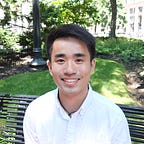From PM to PM
A Product Manager’s Path to Practicing Medicine
--
A healthy-looking 20-year-old sat on the exam table with a huge toothy grin, the mirror opposite of his distraught mother. I introduced myself to the room as a product manager from PatientPing, a care coordination application installed on the physician’s computer. Despite appearing physically normal, Manuel’s developmental disabilities limited him to an 8-year-old vocabulary and short attention span. His mother explained how his calls complaining of headaches during working hours had been growing more frequent and that Tylenol and ample sleep failed to resolve his distress. While methodically narrowing his differential, the pediatrician gently navigated the conversation to Manuel’s relationship with his mom: she was working longer hours and coming home more fatigued. We learned that Manuel had begun to associate “headaches” over the phone with his mom’s earlier arrival and attentive care. Amazed at the behavioral diagnosis, I left inspired by how the physician could begin by physically assessing a patient like Manuel but leave caring for Manuel’s emotionally strained mother.
Over the past year, I have spent hundreds of hours continuously inspired by the humanity in shadowing patient experiences like this one at Boston Medical Center’s Comprehensive Care Outpatient Clinic. As my interest in medicine grew, my time shadowing in hospitals began to extend beyond my professional obligations. I found myself drawn to patient care, and now these experiences take up the majority of my personal and extracurricular time. As I have taken steps closer to patient care, I have realized how technology in a clinical setting can sometimes abstract physicians from the care of an individual patient. Stories like Manuel’s have also shown me how far medicine extends beyond the immediate clinical encounter: our neediest patients suffer from longer-lasting symptoms that are not always clinically acute.
Shadowing in Boston’s Emergency Departments and volunteering at the Boston Healthcare for the Homeless Program has shown me this hidden complexity behind our most vulnerable patient populations. Mental and physical exacerbations that I see in the emergency room are only the acute peak of a much longer-lasting tail of social complexity. While diagnosing technical issues plaguing patient’s federally-subsidized smartphones as a Computer & Phone Trainer, I have listened to countless stories of addiction, recovery, and renewal. Each individual story has shown me how inextricably tied a patient’s social and medical needs are in a system that has yet to adequately support the treatment of both.
This difference between each patient’s unique story and the overarching healthcare system mirrors my biggest realization about practicing medicine versus working in the healthcare industry. As a product manager, I have had the privilege to serve hundreds of thousands of patients and providers alike by leveraging my technical background in designing and developing products. But my experiences at healthtech companies only offer an indirect ability to directly care for patients, especially in influencing these social determinants. In contrast, the physician’s direct relationships with patients in clinical medicine feels much more intimate than the the macroscopic view that I have grown accustomed to in the healthcare industry.
The tension between these perspectives is compelling to me as a healthtech enthusiast and aspiring physician, and draws me to become a conduit between medicine’s humanity and healthcare technology’s scale. At Stanford, my self-imposed mission was to build these bridges through interdisciplinary organizations (e.g., SHIFT), cross-departmental events (e.g., health++), and team-based courses (e.g., CS96SI). As a healthcare product manager, I have a similar role supporting cross-functional teams as a generalist in an ever-specializing industry. I believe that a career as a clinician is necessary to be a more well-rounded advocate for patients. It is only in a physician’s intimate moments with patients where our industry’s complex incentives are stripped away, technologies and tools fade to the background, and the humanity of the physician-patient relationship is affirmed as the cornerstone. Practicing medicine will allow me to better serve patients as a conduit and champion for a more human healthcare system.
